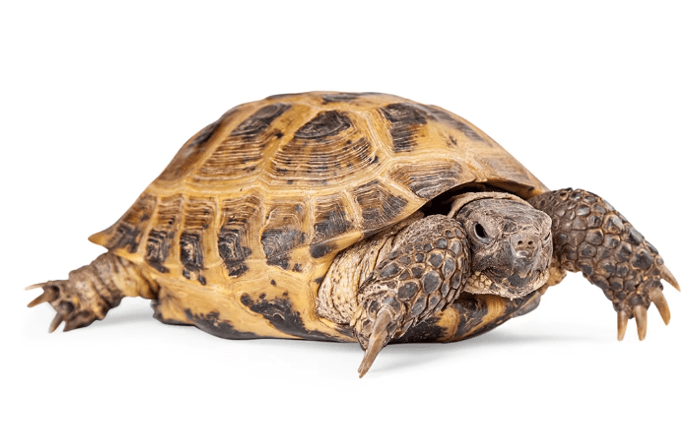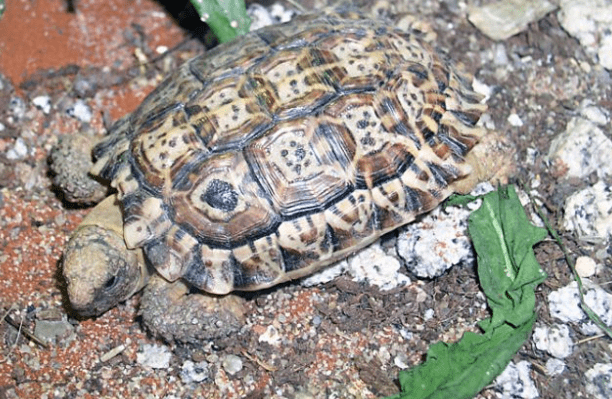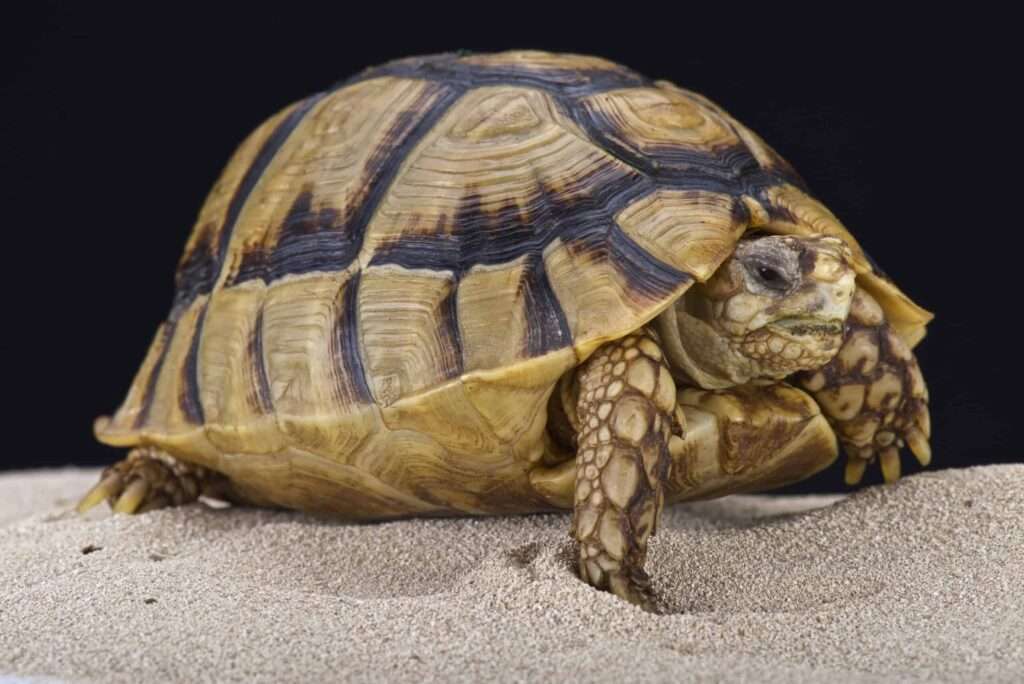
Description
The endangered Russian tortoise (Testudo horsfieldii) is a species of tortoise that can only be found in Central Asia. Russian tortoises are among the little tortoises. Compared to females, which often have short, plump tails and shorter claws, males frequently have longer tails that are tucked to the side. In general, males are also smaller than females. The male has a slit-shaped vent (cloaca) near the tip of its tail, but the female has an asterisk-shaped vent (cloaca). Russian tortoises have four toes.
Habitat
From the Caspian Sea in the south, through Pakistan, Iran, and Afghanistan, and east via Kazakhstan to Xinjiang, China, the Russian tortoise can be found. Its natural habitat consists of arid, desolate areas including rocky hillsides and deserts, sand steppes, and grassy areas near springs. These regions can have unusually chilly and brutal winters with temperatures well below zero.
Behavior
With only three months of activity on average each year, the Russian tortoise has a notably brief active season. It normally emerges from hibernation in March. From then until mid-June, it aggressively forages and mates. In a large portion of its territory, it will aestivate during the stifling summer heat before emerging short at the end of the season to feed before hibernating. It retires into a two-meter-deep tunnel during the day and at night, coming out only to hunt at dawn or dusk when the temperature drops. The tortoise is protected from the winter cold by the depth of its burrow. Due to their high levels of sociality, these tortoises frequently visit neighboring burrows and may spend the night there in groups.

Keeping as Pet
Enclosure
A plastic tub, glass tank, or wooden terrarium are all suitable solutions for indoor enclosures. At least 5 square feet should be available inside the enclosure, but bigger tanks are always preferable.
They should have at least a 3 foot by 3 foot pen with walls that are 1 foot tall and 6 inches deep for outside enclosures. To enable them to properly control their body temperature, it is crucial to make sure that at least a portion of their enclosure is shaded.
They must have a safe enclosure whether kept indoors or outside because they have been known to escape out.
Tank Type: glass.
Tank Size: 5 square feet with 12-inch walls.
Lighting: UVB lighting for at least 12 hours a day.
Bedding: mix of soil, hay, pebbles, sand.
They need a warmer and a cooler non-heated side in their tank if maintained inside. The cooler end should be between 70 and 72 degrees, while the hot side shouldn’t get above 90 degrees. UVB rays are also necessary for them to metabolize calcium. Use a UV light and a basking light, or you can use a mercury vapour bulb for both.
Diet
Russian tortoises are voracious feeders who will consume large amounts of food as they get ready to hibernate in the months before summer.
They consume grass, broadleaf weeds, leafy vegetables, edible plants, and flowers in the wild where they are herbivores. Therefore, while in captivity, they should be fed a diet high in fiber, primarily composed of greens: Collards (type of cabbage), Dandelion greens, Kale, Mustard greens and Turnip greens.
To prevent food from spoiling, it should be taken out of their enclosure if they don’t eat it within a few hours. Additionally, vegetables including peppers, squash, carrots, maize, and sweet potatoes should be added to their diet as a supplement. You can also give your pet some apples or berries every once in a while as a treat.
Table





